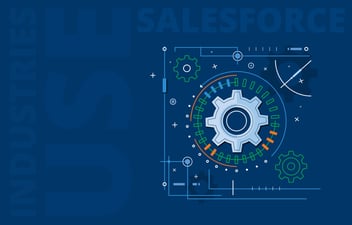Explore how the fusion of IoT and CRM empowers retailers to deliver hyper-personalized experiences, streamline inventory, and gain real-time insights that fuel growth and loyalty.
The retail landscape has been reshaped by two powerful forces: the Internet of Things (IoT) and Customer Relationship Management (CRM) systems. Separately, they’ve each transformed how businesses collect and use data. But together? They’re ushering in a new era of Connected Commerce—one where shopping experiences are intuitive, data-rich, and friction-free.
From smart shelves to predictive loyalty rewards, the collaboration between IoT in retail and CRM in retail is no longer a forward-thinking strategy. It's a competitive necessity.
What Is Connected Commerce, Really?
At its core, Connected Commerce is about unifying every touchpoint—online, in-store, mobile, and even IoT-powered environments—into a seamless and personalized journey for the customer. It connects data from multiple channels and devices to create one continuous loop of engagement and insight.
This isn’t just a UX upgrade. It’s a business performance booster.
According to McKinsey, companies that leverage customer behavioral insights outperform peers by 85% in sales growth and more than 25% in gross margin.
So how do IoT and CRM come together to make this happen?
The Expanding Role of IoT in Retail
IoT in retail refers to the use of connected devices and sensors that collect and share data across the retail environment. These technologies are rapidly becoming mainstream, with use cases ranging from inventory management to personalized marketing.
Examples of IoT in action:
- Smart shelves that detect low stock and automatically notify employees or reorder items
- In-store beacons that send promotions to a customer’s phone when they pass a specific product
- RFID tags that track how products move within the store
- Interactive fitting rooms where smart mirrors recommend items based on what the customer tries on
These devices generate massive amounts of real-time data. But without integration into a central system, the data remains isolated and underutilized.
That’s where CRM in retail becomes essential.
Why CRM in Retail Needs IoT (and Vice Versa)
CRM in retail centralizes customer data—purchase history, preferences, loyalty status, service requests, and digital behavior. When connected to IoT systems, the CRM doesn’t just store data—it becomes the command center for meaningful action.
Imagine this scenario:
A customer walks into a physical store wearing a smartwatch linked to a retailer’s mobile app. A beacon detects them and, using CRM data, recognizes that they recently browsed running shoes online. Instantly, a notification pops up offering 10% off the specific shoes they looked at—available in their size.
That’s the power of Connected Commerce—bridging the gap between physical and digital, passive data and active engagement.
Real-World Example: Amazon Go and Beyond
Amazon Go is perhaps the best-known retail example of IoT and CRM in harmony. Shoppers use the Amazon app to enter the store, grab items off the shelf, and walk out—no checkout required. Behind the scenes, a network of cameras and sensors tracks product selections while the CRM system charges the customer and updates their account in real time.
While few retailers can replicate Amazon's infrastructure, the model sets a precedent: Connected Commerce works when IoT provides the data and CRM drives the personalization.
Even traditional retailers are moving in this direction. Brands like Lowe’s and Walmart have invested heavily in smart inventory systems and app-based loyalty experiences that connect in-store behavior with digital profiles.
Business Benefits of a Connected Commerce Strategy
Integrating IoT in retail with CRM in retail doesn’t just create a smoother customer experience. It delivers tangible business value:
1. Smarter Inventory Management
IoT sensors can alert retailers when items are running low or misplaced. CRM data helps predict which items are most in-demand based on customer trends.
2. Hyper-Personalized Marketing
Retailers can use location, behavior, and past purchases to send offers that feel less like marketing—and more like helpful suggestions.
3. Reduced Friction in the Buyer Journey
From self-checkout to curbside pickup, IoT and CRM work together to minimize wait times and maximize convenience.
4. Improved Customer Service
Smart devices can trigger real-time alerts to customer service teams when an issue occurs—while CRM provides context for fast, informed resolutions.
Tech Stack Essentials: What You Need to Get Started
To fully leverage Connected Commerce, retailers need the right infrastructure:
- CRM platform that’s flexible, scalable, and integrates easily with external devices. HubSpot and Salesforce are leaders here.
- IoT middleware or integration tools like Azure IoT Hub or AWS IoT Core to connect and manage devices.
- Retail analytics dashboards to visualize data and spot trends quickly.
- Customer loyalty and engagement tools that tie directly into CRM platforms.
If you're looking for help integrating CRM and IoT capabilities, CETDIGIT specializes in end-to-end CRM optimization and automation—ensuring your data works for you, not against you.
The Future of CRM and IoT in Retail
The next wave of Connected Commerce will likely include:
- Voice commerce integrations powered by AI and CRM history
- Real-time, in-store facial recognition to personalize shopping experiences
- Augmented reality apps that guide customers to products based on their preferences
As 5G and edge computing become more accessible, expect IoT in retail to get even faster, smarter, and more predictive. And as CRM systems evolve, they’ll become increasingly autonomous—activating marketing, inventory, and service actions with minimal human input.
The Connected Future Is Already Here
Retailers no longer need to choose between investing in digital or physical. With Connected Commerce, they can do both—and do it smarter.
By marrying the real-time insights of IoT in retail with the strategic intelligence of CRM in retail, businesses can meet customers where they are and guide them where they’re going next.
Whether you're a global brand or a growing retailer, the message is clear: Integration isn't optional. It’s how you stay connected, relevant, and profitable in a retail environment that never stops moving.





Leave a Comment